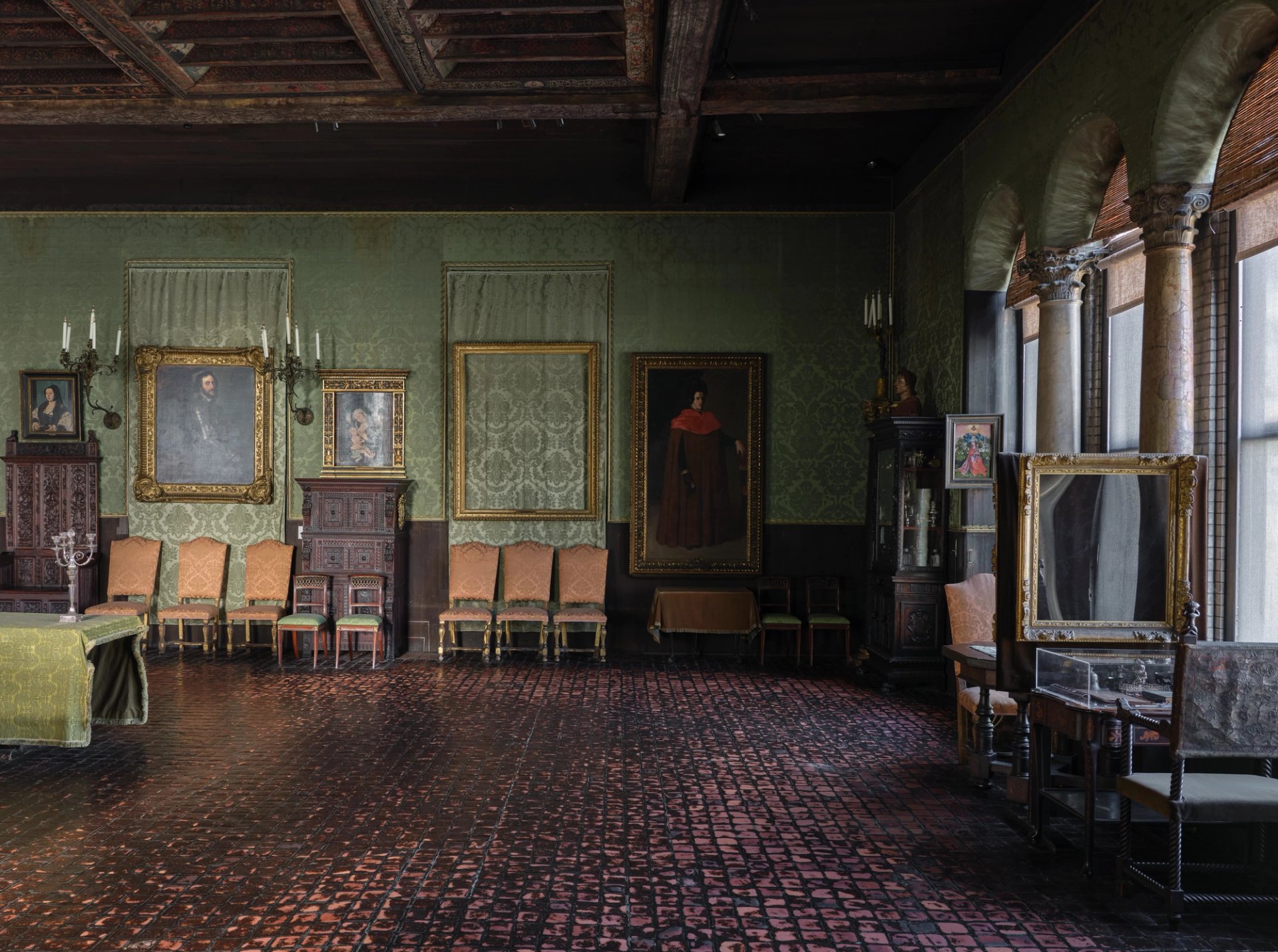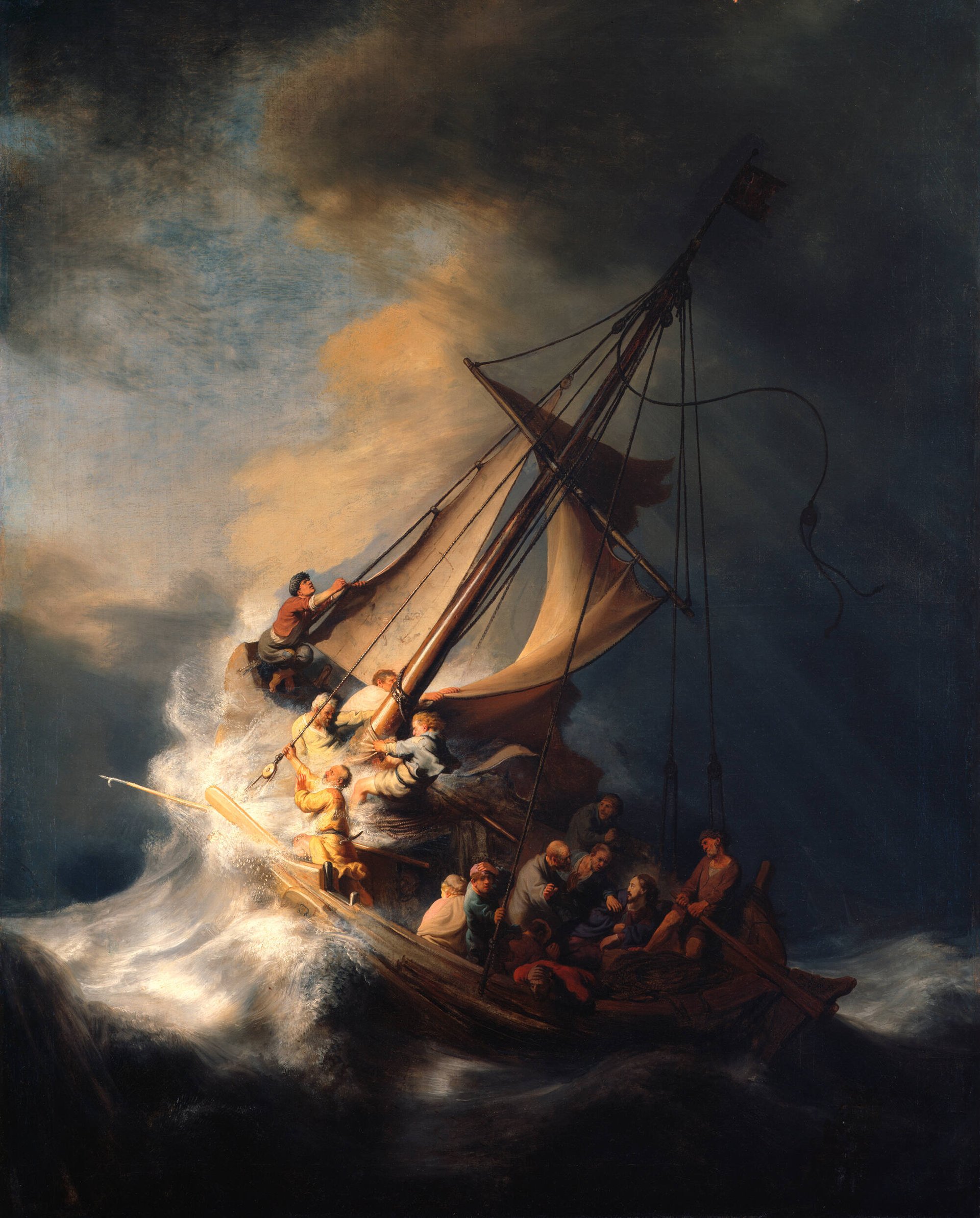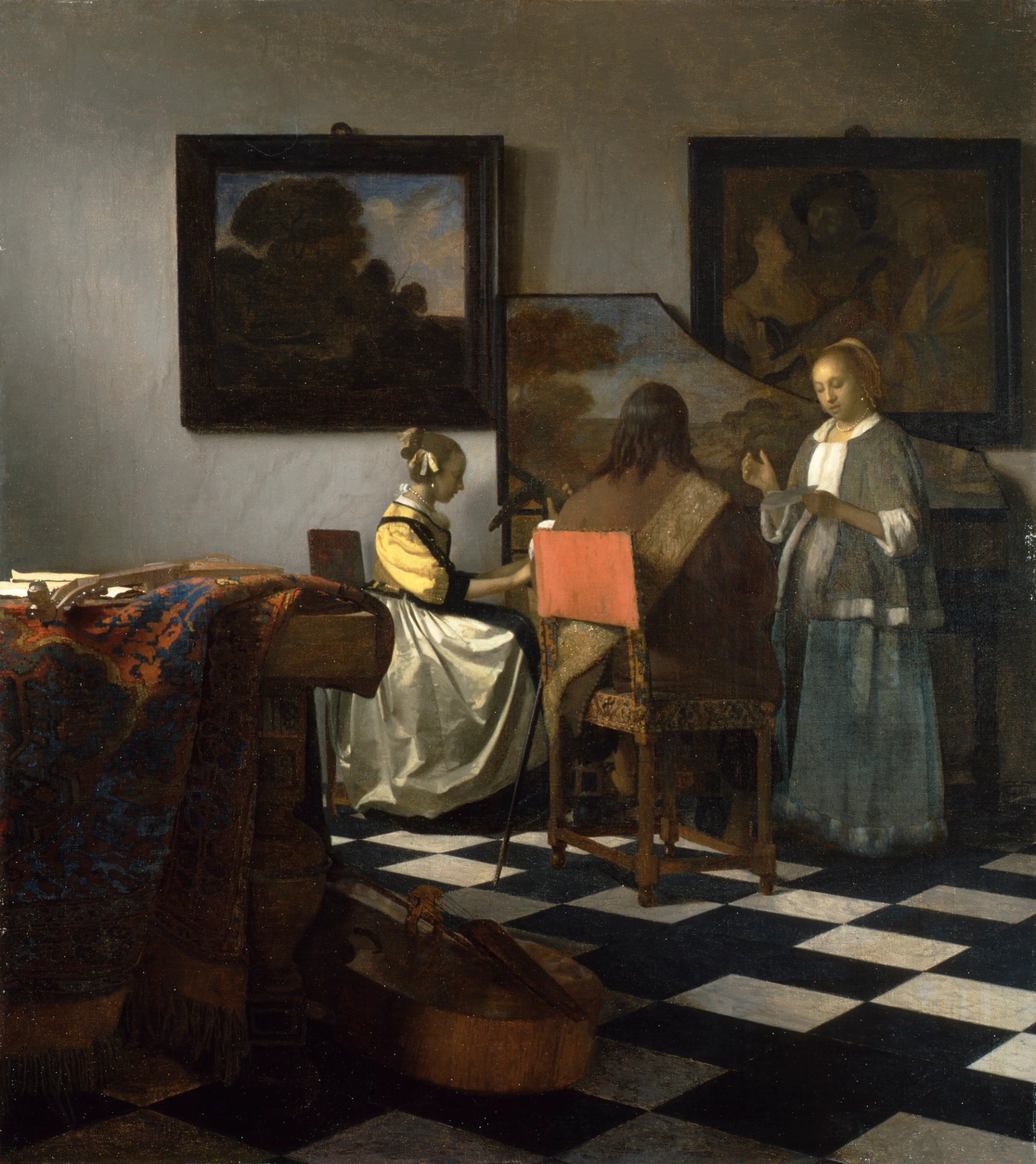Tuesday, 18 March marks the thirty fifth anniversary of the day thieves entered the Isabella Stewart Gardner Museum and seized 13 artworks. The theft is believed to be not solely the world’s largest artwork heist, but additionally the most important single occasion of property theft by worth.
Within the early hours of 18 March 1990, two males disguised as law enforcement officials entered the museum, handcuffed the 2 safety guards on obligation and took off greater than an hour later with 13 works. The crime happened the morning after St Patrick’s Day in Boston, the US metropolis with the very best fee of residents with Irish ancestry, and partygoers passing by shortly earlier than the theft noticed the suspects however seen nothing misplaced. Within the 35 years since, not one of the items have been recovered and no arrests have been made, although theories abound as to who was behind the heist and the place the objects could also be (theories embody Philadelphia, Eire and Corsica).
One other unclear side of the case is the worth of the works that had been taken. We are going to by no means know the true market worth, even when all 13 objects had been to be discovered and returned. Gardner, the eccentric heiress who constructed the gathering and established the museum, stipulated in her will that no works may be deaccessioned. The will even states the gathering will stay displayed how Gardner wished earlier than her loss of life in 1924—to adjust to the need, the museum hangs the stolen portray’s frames that had been left behind in hope the paintings will probably be returned.
The Dutch Room because it regarded in 1926 Courtesy the Isabella Stewart Gardner Museum

The Dutch Room in 2023, lacking The Storm on the Sea of Galilee Courtesy the Isabella Stewart Gardner Museum
Gardner constructed a world-class assortment, and was one of many first American collectors to aggressively purchase works by European masters. Objects that had been stolen most notably embody certainly one of solely 37 recognized work by Johannes Vermeer, The Live performance (1662-64), in addition to Christ within the Storm on the Sea of Galilee (1633), Rembrandt van Rijn’s solely seascape. Shortly after the theft, the museum’s curator Karen Haas informed The New York Occasions the 13 works had been value in extra of $200m. Bizarrely, the portray largely believed on the time to be the museum’s most precious was left behind: Titian’s Rape of Europa (1560–62), which Gardner bought in 1896. It was the primary genuine portray by the artist to ever enter an American assortment. Gardner spent $100,000 on it, the equal to $2.5m in 2017, based on the museum.
Nevertheless, artwork valuation just isn’t a precise science. The increase in artwork costs over the previous few a long time and inflation complicate calculations, as does the rarity of the works taken. Gardner acquired most of her assortment on the flip of the century from Europe, a lot of it via the artwork historian Bernard Berenson. Comparable works not often, if ever, come up for public sale for comparability.

Rembrandt van Rijn’s Christ within the Storm on the Sea of Galilee (1633) Courtesy the Isabella Stewart Gardner Museum
A newer—and probably the most often-repeated—valuation for the stolen Gardner Museum works is $500m. That determine seems to have originated in 2000 from FBI agent Thomas Cassano, based on Ulrich Boser’s e-book The Gardner Heist: The True Story of the World’s Largest Unsolved Artwork Theft (2009). Boser describes how throughout a chat on the Gardner heist on the Worldwide Basis for Artwork Analysis in New York Metropolis, Cassano estimated all of the works had a present market worth of round $500m; in response, the viewers of artwork students reportedly chanted again, “Extra! Extra!” The FBI declined to touch upon the valuation, and a consultant for the Gardner Museum informed The Artwork Newspaper the $500m determine was not its personal calculation.
The museum’s safety director, Anthony Amore, stated in 2023 on an FBI podcast that the $500m determine is probably going an undervaluation, citing the passage of time and inflation. In 2019, the longtime Previous Masters vendor and former Sotheby’s senior vp Otto Naumann stated the stolen horde can be value at the very least $1bn, with Vermeer’s The Live performance value almost $500m alone.

Johannes Vermeer’s The Live performance (1663-66) Courtesy the Isabella Stewart Gardner Museum
Former FBI particular agent Robert Wittman, who specialised in recovering looted artwork and antiques, labored on the case and informed The Artwork Newspaper greater valuations are “not that outrageous”, pointing to the $450.3m (with charges) fetched by the Salvator Mundi attributed to Leonardo at Christie’s New York in 2017.
One other subject: if the works had been to be returned, what sort of situation would they be in? 5 work, together with Christ within the Storm on the Sea of Galilee and The Live performance, had been roughly minimize out of their frames with blades through the heist. Investigators believed the work could have been rolled as much as transport them, seemingly damaging the centuries-old canvases.
“I had circumstances the place items had been stolen and minimize from their body, then discovered 30 years later in fairly unhealthy form,” Wittman says, including he’s extra hopeful in regards to the works taken that night time that weren’t slashed. Wittman detailed his investigations into the whereabouts of Christ within the Storm on the Sea of Galilee and The Live performance in his 2010 memoir Priceless: How I Went Undercover to Rescue the Works Stolen Treasures.

Rembrandt’s A Girl and Gentleman in Black (1633) Courtesy the Isabella Stewart Gardner Museum
For the museum itself, “the worth of those work to our establishment, and to the general public is inestimable”, Nathaniel Silver, the Gardner Museum’s affiliate director and chief curator informed The Artwork Newspaper in an announcement.
To mark the thirty fifth anniversary of the theft, the museum has unveiled a sound set up within the Dutch Room, from which six of the 13 stolen works had been taken. Sound artist Skooby Laposky has sonically recreated Christ within the Storm on the Sea of Galilee, and guests observing the body will hear waves and the sounds of birds native to the Sea of Galilee. As they transfer across the body, the sound will shift to thunder and winds of a violent storm, based on the museum. The sound set up will run till 19 March (the Gardner Museum is closed on the precise anniversary of the heist, as it’s each Tuesday).
The museum remains to be providing a $10m reward for info that leads on to the return of the stolen paintings.
“We enchantment to the general public to share any info resulting in their restoration,” Silver provides. “Isabella Stewart Gardner left her museum for the ‘schooling and pleasure of the general public ceaselessly’ and we hope to see them returned for the advantage of all.”


